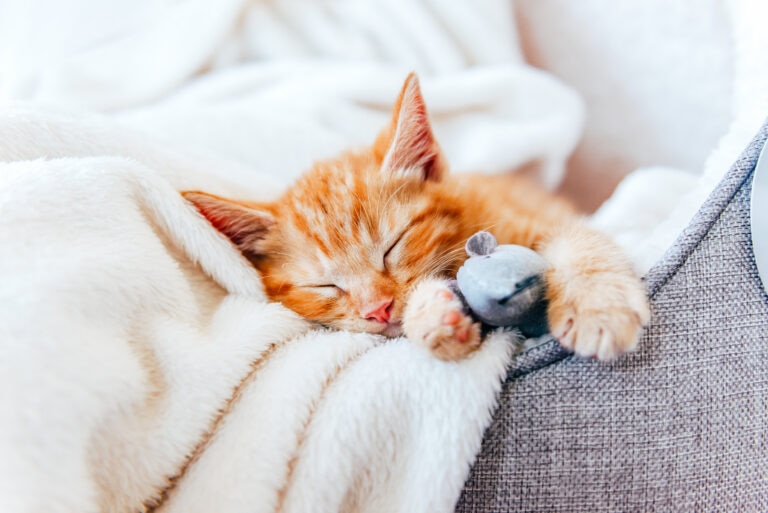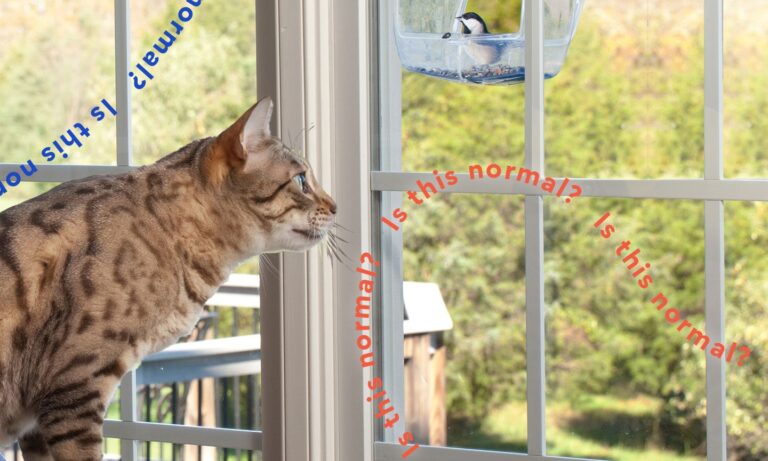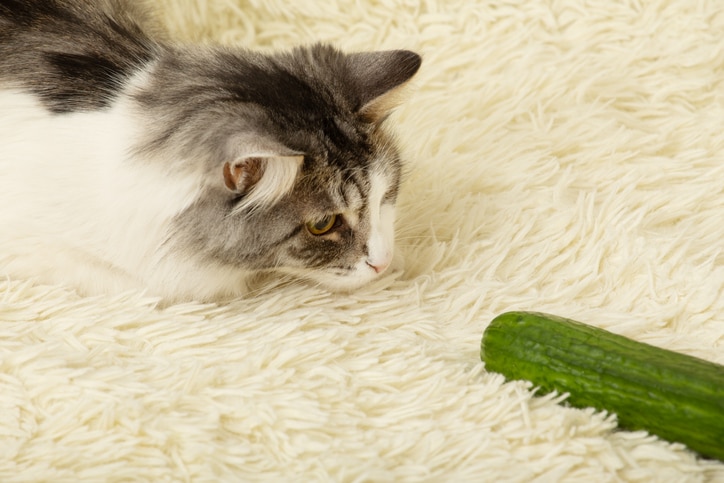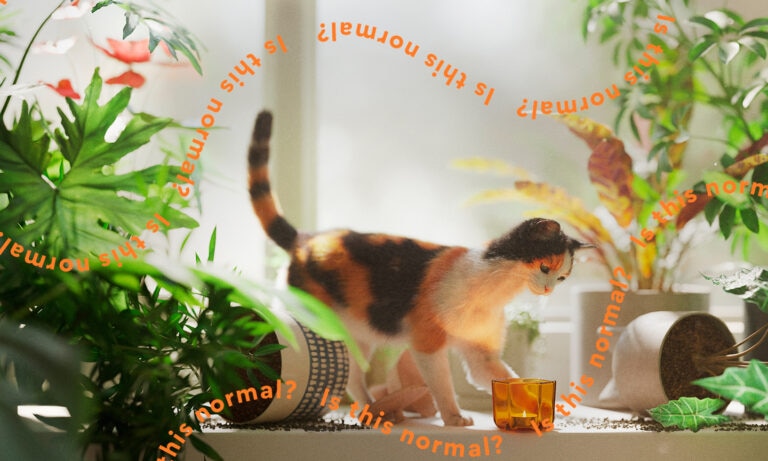How to Stop Your Cat From Biting (Because Wow, That Really Hurts)
Cats: They’re adorable floofballs, sure, but they’re also wild animals who have a few ingrained instincts that can be tricky to break.
Biting is one of those residual habits, so if this is something you’ve dealt with, know that you’re not alone and that there isn’t anything wrong with your cat (or your cat parenting skills).
So, how do you stop a cat from biting? We asked Dr. Amber Karwacki, DVM, a partner veterinarian at Heart + Paw – Callowhill in Philadelphia, Pennsylvania, for her advice on keeping your kitty’s teeth where they belong (i.e. not in your skin).
Why Do Cats Bite?
Young cats, adult cats and even older cats are all prone to biting, and they may do so for a handful of common reasons:
- They’re Being Playful: Play biting is very common among cats, who often use playtime as a way to satisfy their inner drive to hunt prey. This is normal and natural—it’s only a problem when they treat you as the prey, rather than their toys!
- They’re Offering “Love Bites”: Some cats show affection by offering a gentle bite or nip. These type of bites typically happen when your feline feels safe and bonded with you. You know it’s a love bite if your cat’s body language doesn’t denote signs of fear or aggression and they appear relaxed and happy. It also tends to be more of a gentle, holding bite versus a strong, aggressive bite.
- They’re Grooming You: Cats are expert groomers, but they certainly have a few quirks when it comes to keeping clean. Along with long licks, gentle nibbling is part of the process. Cats sometimes “groom” their littermates, mother, and even their humans, too. It’s believed to be a sign of affection—but they may inadvertently nibble along the way.
- They’re Feeling Overstimulated: Cats can be very finicky creatures. One minute they’re lapping up your loving pets, and the next they’re feeling annoyed and ready to pounce—or to bite. Also referred to as petting-induced aggression, cats can quickly feel overstimulated, which can result in a sudden change in mood and behavior. All cats are different in this regard, so be on the lookout for cat body language that indicates they’ve had enough playtime (more on that below).
- They’ve Been Startled: Cats may bite when they have been scared or startled. Usually this happens when they are woken abruptly from sleeping or you’ve somehow been able to sneak up on them.
- They Haven’t Been Socialized: Cats who haven’t been properly socialized may also resort to biting more quickly than domesticated cats. If you have brought a new cat home and see these behaviors, then it may be helpful to work with a certified cat behavior consultant or veterinarian. Ongoing cat training with an expert will hopefully resolve this behavior over time and lead to a happier home.
- They’re in Defense Mode: Fear, anger and stress of any sort can make a cat more likely to bite—but it’s usually a last resort. In these cases, it’s important to give your cat plenty of space, and try to identify what’s stressing out your cat so you can take steps to solve the issue.
- They’re In Pain: When a cat bites out of the blue, it could be from pain or an underlying health issue. If biting is a new behavior for your cat, contact your vet to make sure that there is not a medical condition causing the issue.
How To Stop a Cat From Biting: A Step-by-Step Guide
1. Watch Their Body Language
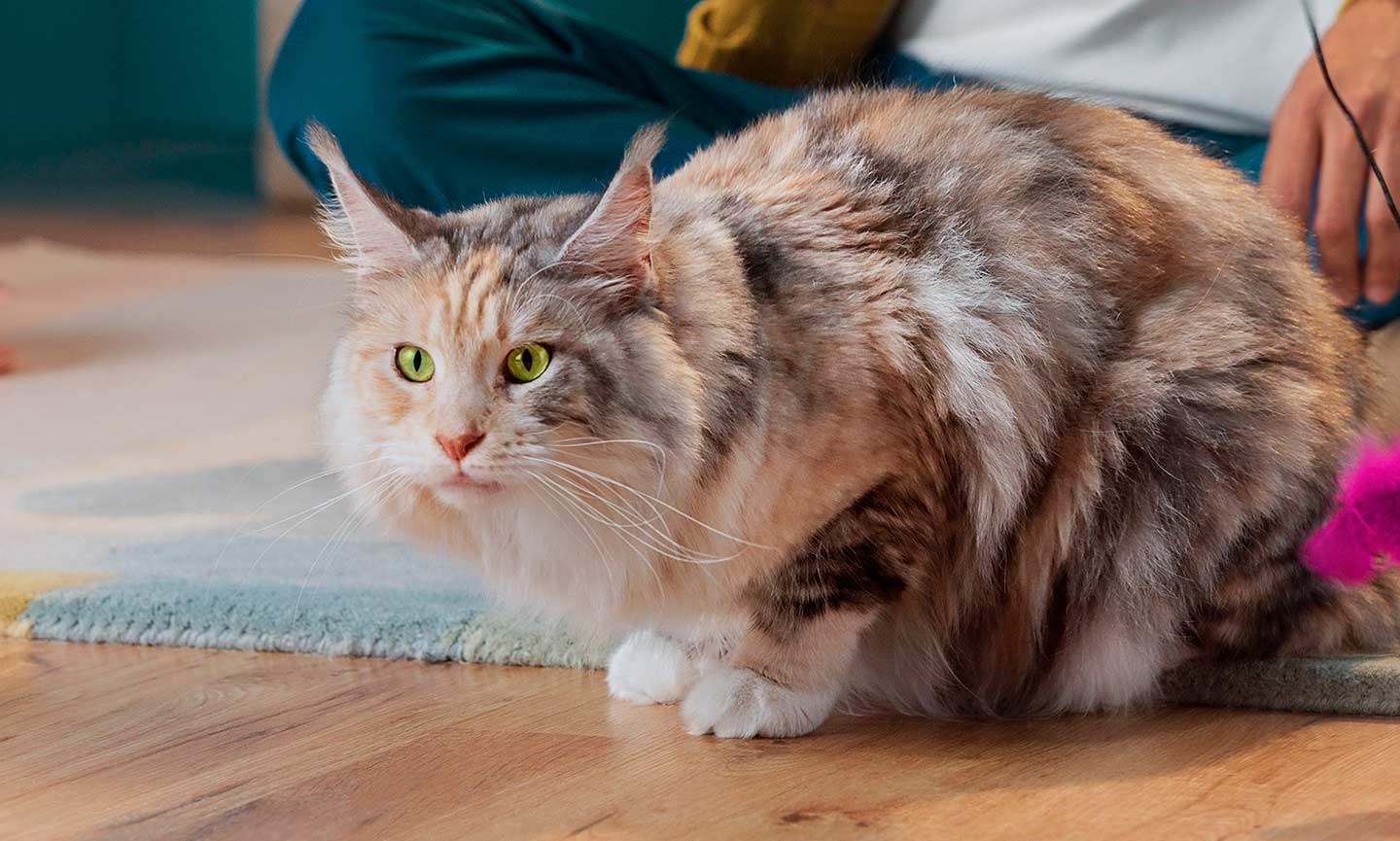
One of the best things you can do to avoid being bitten is to follow the golden rule: Treat your cat as you’d want to be treated. That means paying attention to your cat’s mood and respecting their wishes.
If their body language says “back off,” then it’s time to back off. Hey, if you’d wanted a pet who’s happy to see you no matter what, you’d have gotten a Golden Retriever.
So, before you initiate contact, observe your cat’s body language. If you see these signs, it’s best to leave them alone:
- A low-to-the-ground stance
- Wide eyes
- Flat ears
- Arched back
- Stiff tail
- Puffed-out fur
All of these indicate that your cat is feeling stressed, which means they may be more likely to bite you if you come near.
2. Don't Startle Them
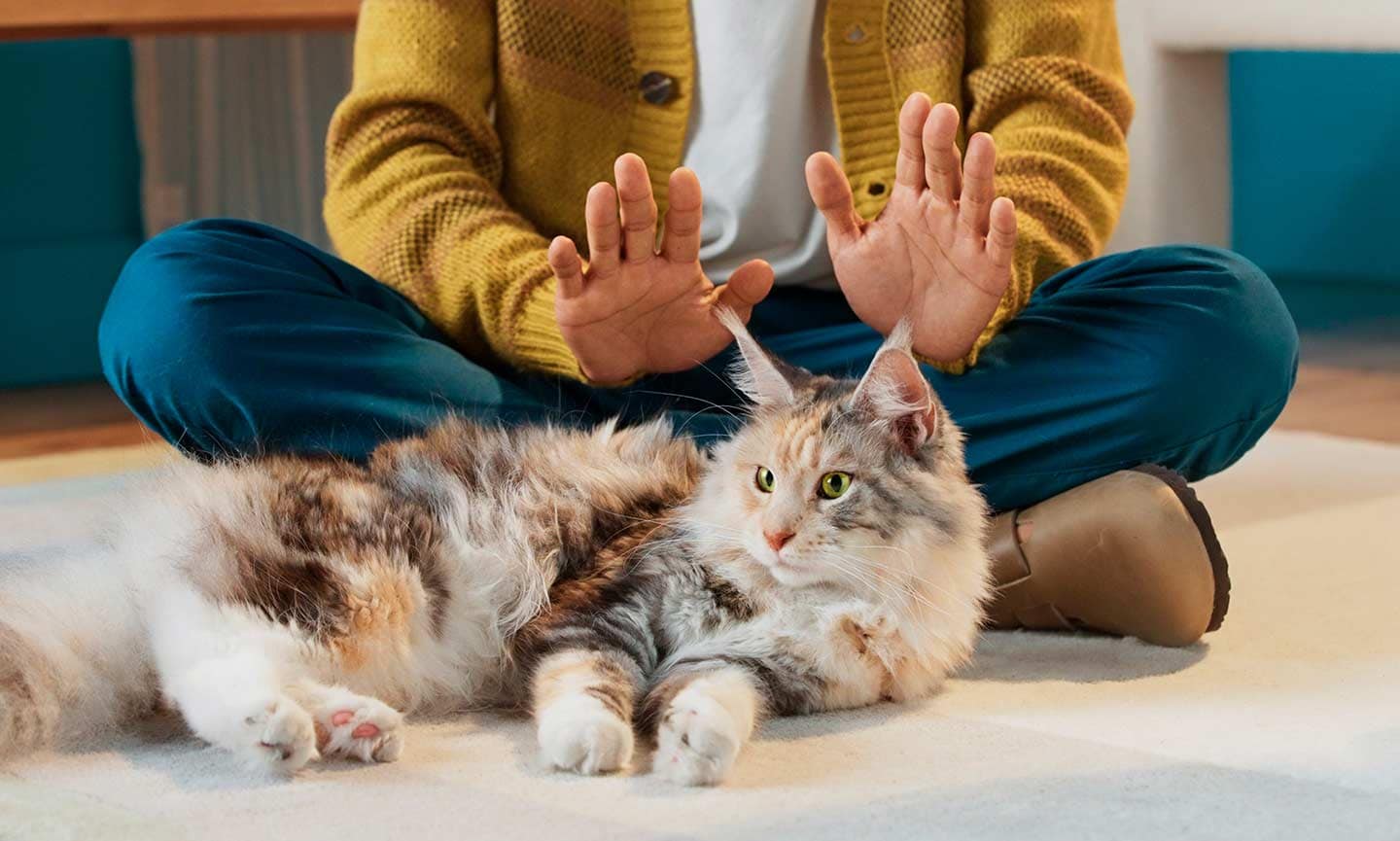
3. Handle Your Cat With Care
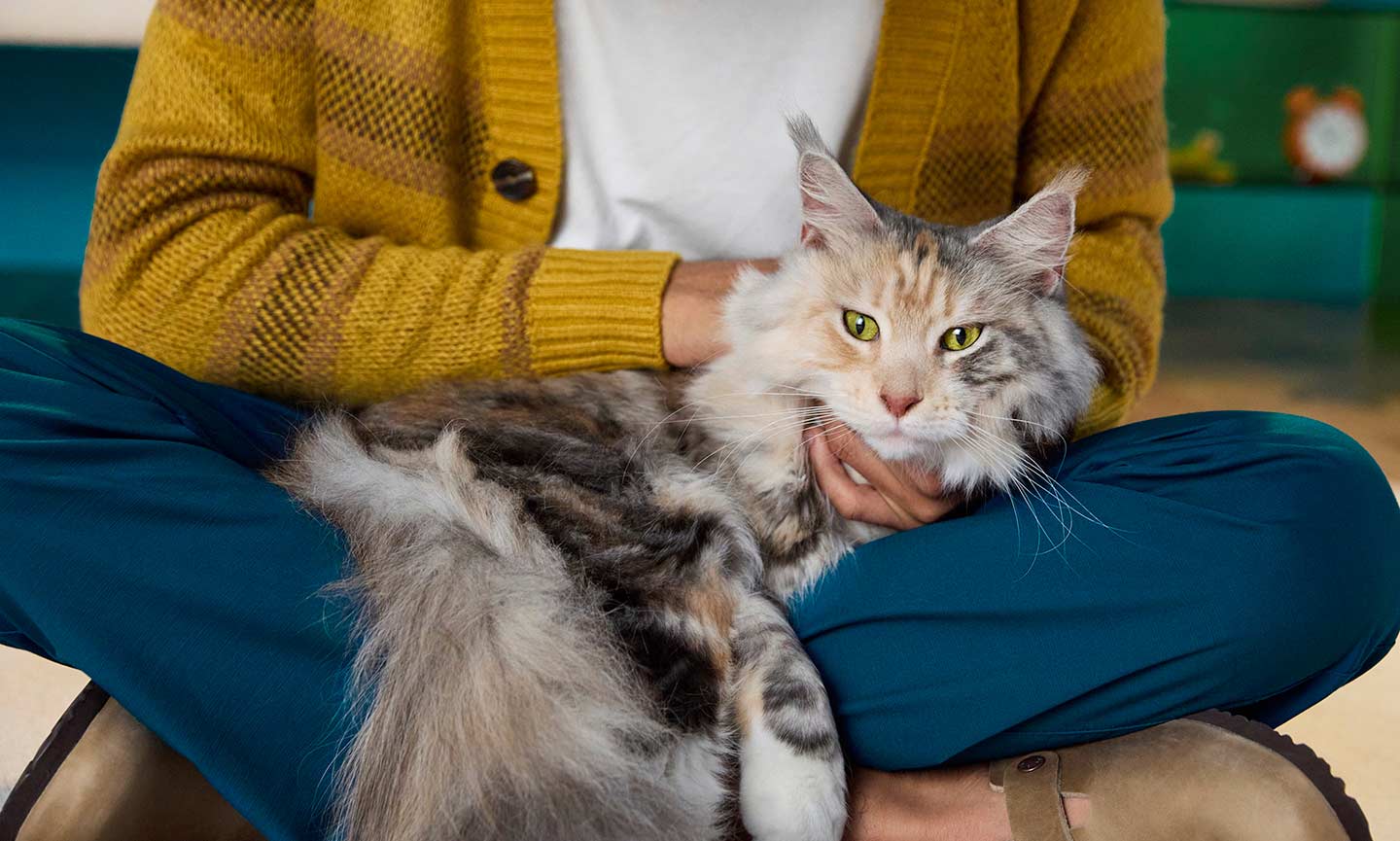
Cats have a lower tolerance for mishandling compared to most dogs, and may bite you if you’re too rough with them. While each cat’s preferences are different, it’s generally best to follow these general rules:
- Use both hands to pick them up—it makes them feel more secure
- Don’t dangle them in the air
- Never pick them up by the scruff of the neck
- Pet their head and neck, avoiding areas like the belly and the tail (unless you have already determined that your cat likes pets in those areas)
4. Use Toys—Not Your Hands—During Playtime
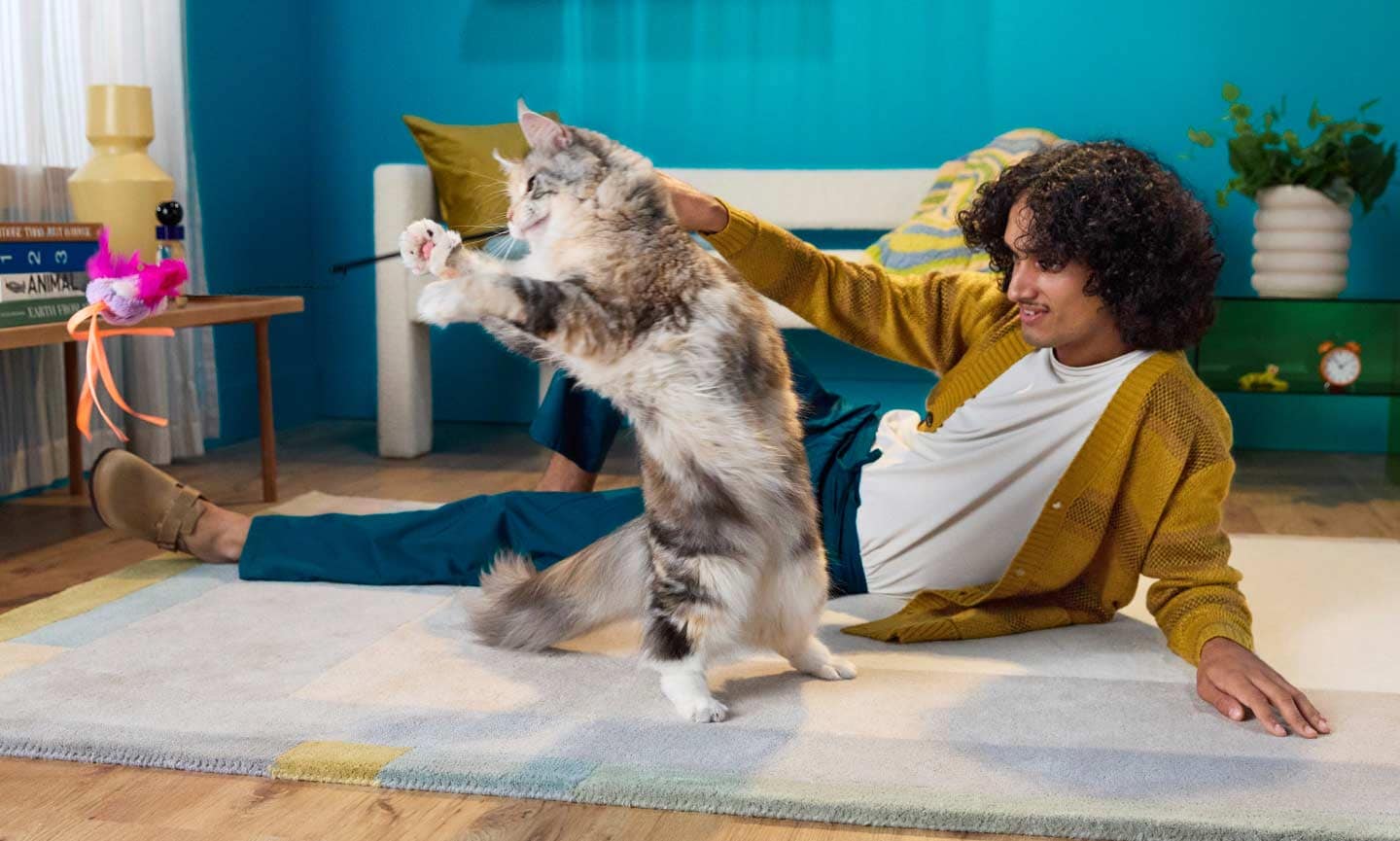
Cats love to play, but getting your hands involved can result in cat bites. Using hands-free interactive toys—such as lasers, wands, or toys that move on their own—are great to satisfy a cat's prey drive. There are also treat dispensing toys that you can fill with treats or dry food. For added difficulty, fill it up and then hide the toy in your house. This allows your cat to "hunt" for their food.
Recommended Products
5. Reward Your Kitty for Good Behavior
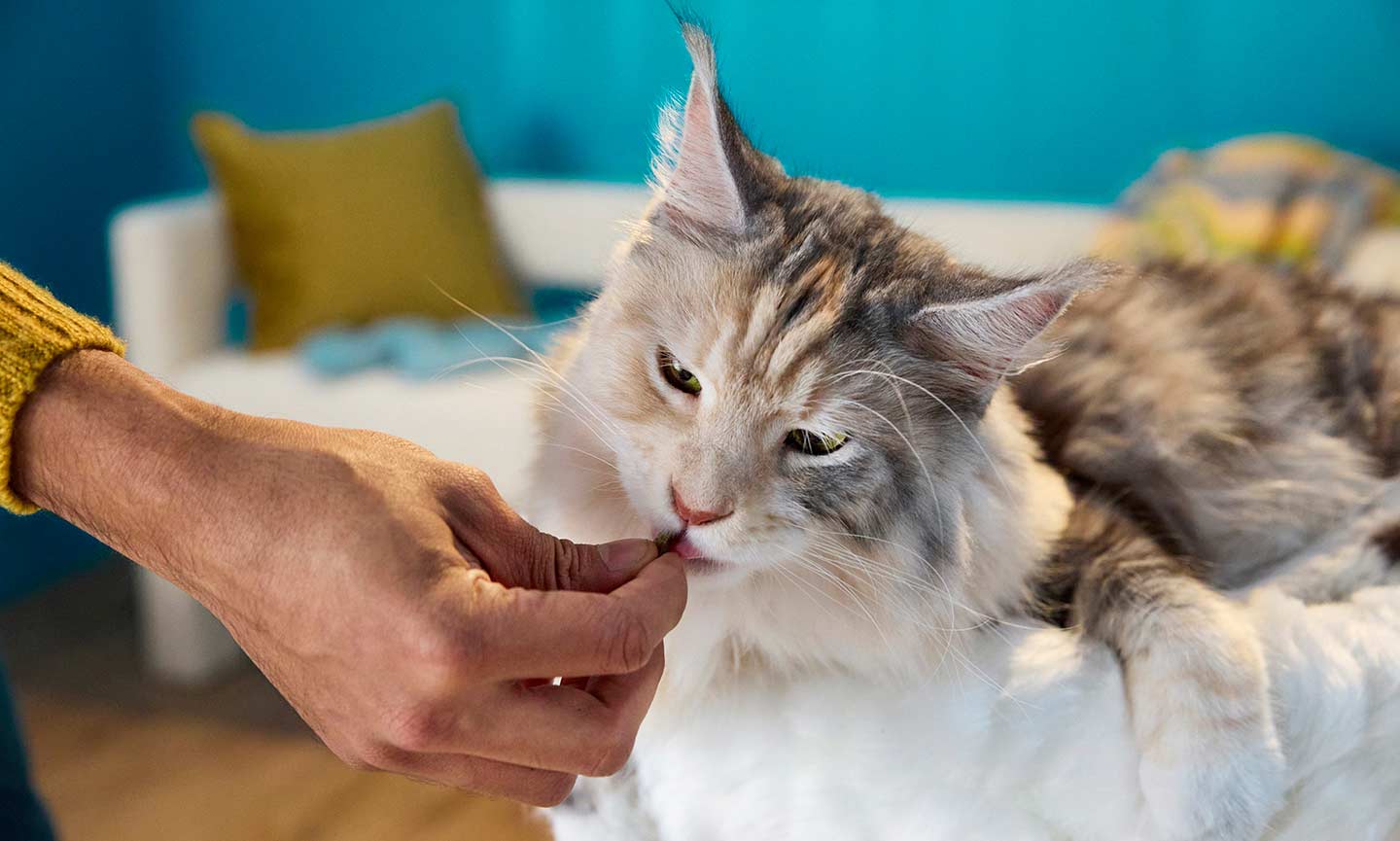
If your cat likes treats, incorporate them into your interactions to positively reinforce good behavior. Use the treat that your cat loves most, and offer it at regular intervals during playtime—as long as they refrain from biting you.
If they do bite you, pause playtime and step away, waiting at least a few minutes before restarting. This teaches your cat that good things come from keeping their biting instinct in check—and that biting you will interrupt the flow of their favorite snacks.
6. Consult a Professional

Cats who aren’t properly socialized may be more apt to bite their owners. Working with a cat behaviorist can help curb this behavior so you and your kitty can enjoy more quality time together. Organizations like the American College of Veterinary Behaviorists and the International Association of Animal Behavior Consultants host listings that allow pet parents to search for reputable behaviorists in their area.
There may also be a medical reason for your cat’s biting behavior, especially if your kitty has suddenly begun biting you for seemingly no reason. If your cat is typically well-behaved but has begun biting you seemingly out of the blue, schedule an appointment with your veterinarian to rule out any underlying health conditions.
You can also use Chewy’s Connect With a Vet service for instant advice from a veterinary expert.
How To Treat a Cat Bite
Cat bites that don’t break the skin are generally harmless. You can ice the bite or temporarily apply pressure to the spot to relieve some of the discomfort.
Cat bites that break the skin and draw blood, on the other hand, should be treated immediately, because they could become infected by bacteria from the cat’s mouth. Follow these steps:
- Gently wash the area with warm, soapy water for about five minutes. Do not use rubbing alcohol or hydrogen peroxide, which are strong disinfectants that can delay healing.
- Cover the wound with a sterile bandage. You can apply antibacterial ointment to the wound before bandaging it, but it’s not necessary.
- Change the dressing at least once per day, as well as anytime it gets wet.
Keep an eye on the area and be on the lookout for any signs of infection, which may include:
- Redness
- Oozing at the site
- Continued bleeding
- Fever and/or chills.
Consult your doctor if you experience any of the above.
Attributions
Expert input provided by Dr. Amber Karwacki, DVM, a partner veterinarian at Heart + Paw – Callowhill in Philadelphia, Pennsylvania.








